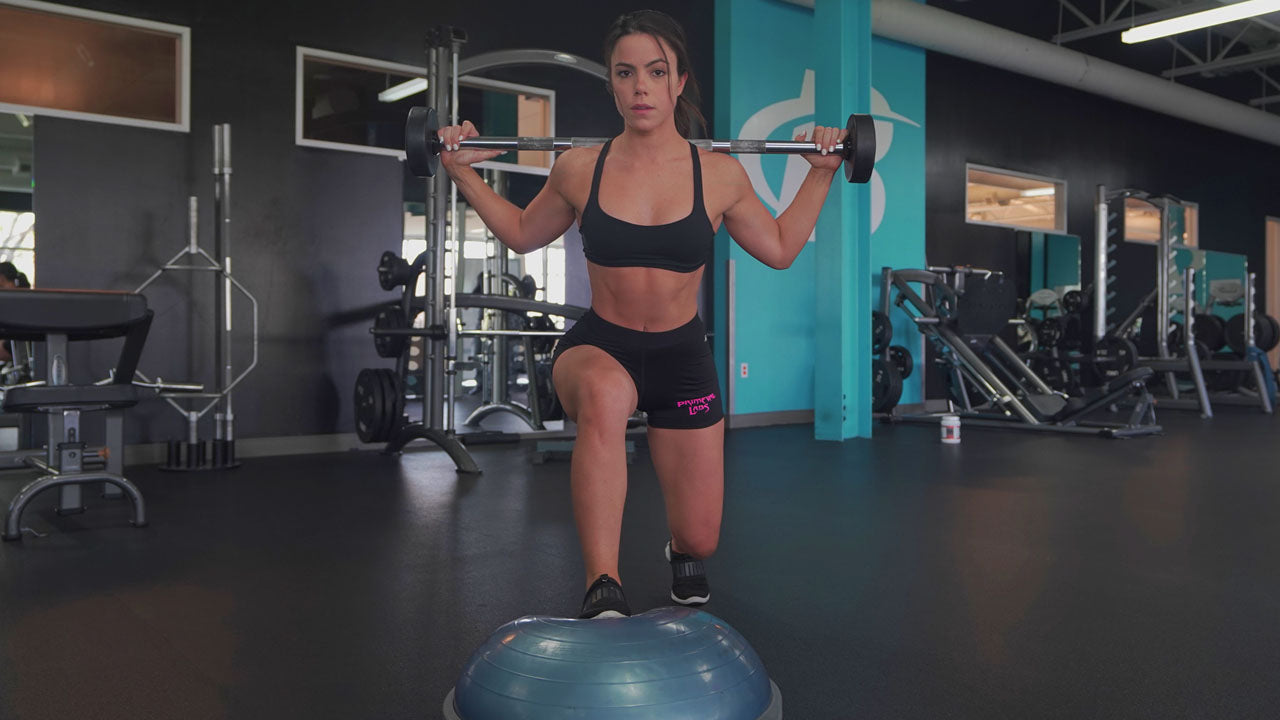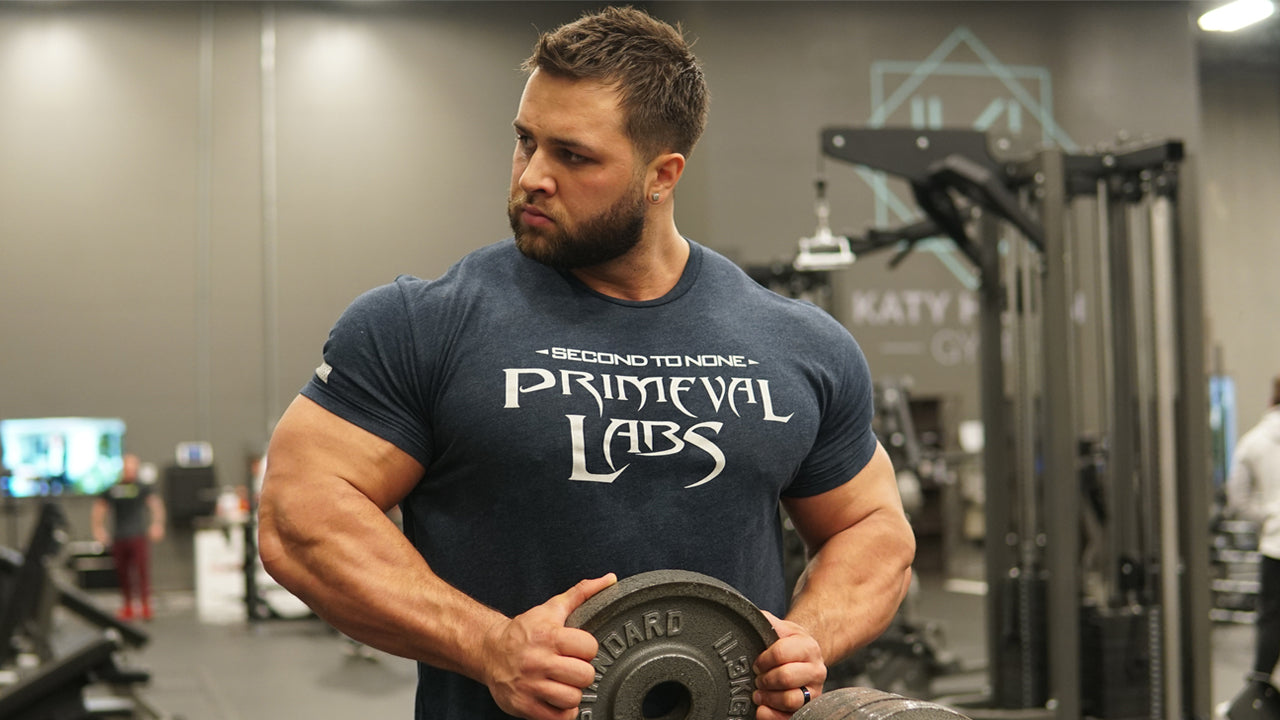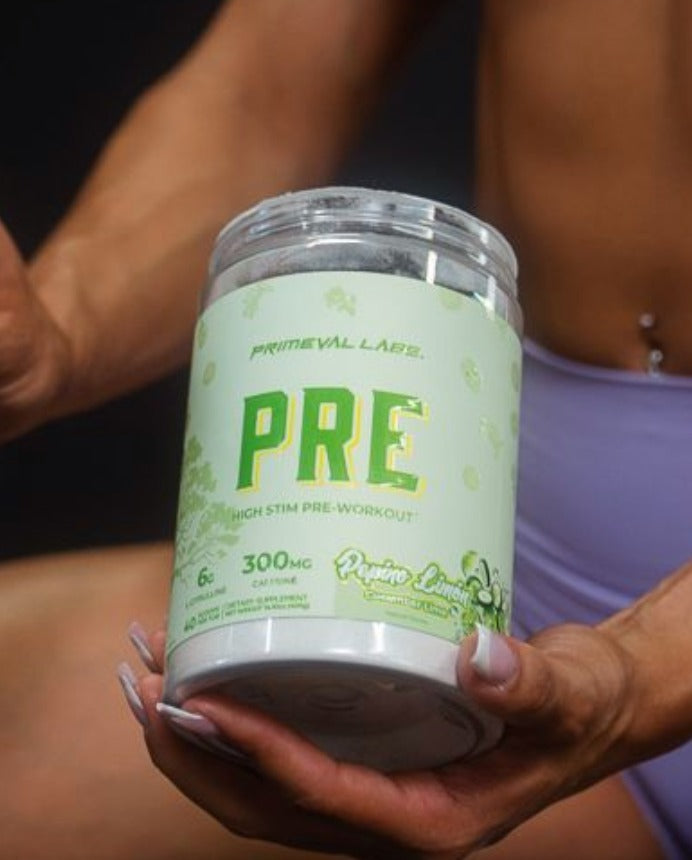Squats, deadlifts, and leg press are the “usual suspects” of leg day.
And, make no mistake, these compound movements are incredibly effective for building a stronger lower body.
But, that doesn’t mean those are the only exercises you should do to build muscle and strength.
Plus, some people just aren’t built to squat or deadlift with a barbell due to either their anatomy and anthropometry or history of injury.
Still others prefer to train at home and don’t always have access to a commercial gym replete with all sorts of power racks, machines, and cable set ups.
Does this mean you can’t get in a killer leg day workout and/or build a set of monster wheels?
Not at all.
Enter the lunge -- a movement that works the entire lower body, improves athleticism, and builds core strength.
And, since lunges require less total loading on the spine compared to squats and deadlifts, they’re typically easier on your knee and hip joints.
Here, we give you our favorite lunge variation to build bigger, stronger, and more athletic legs.
Whether you’re a novice or experienced lifter, these lower body exercises can be added into your workout.
Let’s get started!
8 Lunges for Bigger, Stronger Legs
Stationary Lunge
The stationary lunge (a.k.a. split squat) is a great “primer” for the more intense lunging patterns to come as it gets you used to being in a lunge position, but in a non-dynamic manner.
Typical lunge variations call for you stepping either forward, backward, or to the side, which requires a higher degree of stability, mobility, and strength than stationary exercises (where your feet remain in one place).
For those unfamiliar with lunging, the stationary lunge represents an opportunity to build the unilateral strength and stability needed to perform the more advanced variations to come.
And, since the stationary lunge is, well stationary, you are able to use heavier loads, which may be desirable for individuals looking to use heavier loads and build strength as opposed to purely hypertrophy.
As with all lunging patterns, the stationary lunge (split squat) can be performed with dumbbells, kettlebells, barbells, EZ-bars, or no weight at all (i.e. bodyweight).
Reverse Lunge
Progressing from the split squat, we come next to the reverse lunge.
The reverse lunge is a bit easier to learn as the working leg remains stationary during the movement, while the non-working leg moves.
For individuals with knee issues, the reverse lunge is also a more appealing lunge variation as it places less stress on the knee as the shin can remain vertical.
The reason for this is that forward lunges drive more tension into the anterior structures of the kneecap, placing additional strain on the patellar tendon and patella.
With reverse lunges, however, there is no added “shock” from ground forces contacting the working leg (as it remains fixed in place while the non-working leg is moving backward). Additionally, the forces exerted on the working leg are directed more vertically and backward which helps load the hip and the quadriceps better.
Finally, the reverse lunge also places the hip into slightly greater flexion than would be experienced with a forward or walking lunge, which decreases some of the strain being placed across the knee joint. This greater degree of flexion also helps to increase glute and hamstring activation more than a conventional forward lunge.
To really hammer the glutes and hamstrings on the reverse lunge, you can place a floor slider under your non-working leg. As you drag your foot back to the working leg, you’ll notice an intense contraction in the hamstring of the working leg.
Deficit Reverse Lunge
When reverse lunges become too easy (as if that’s possible), you can up the ante by incorporating a change in elevation.
Deficit reverse lunges have you begin on an elevated surface (exercise step, low plyo box, etc.) and move the non-working leg down to a lower point of elevation.
This change in elevation forces your lower body to go through an increased range of motion, which increases time under tension as well as the amount of stress (and therefore, work) on the quads, glutes, and hamstrings.
Watch yourself the first few times attempting this exercise as it requires a higher degree of balance, strength, and stability compared to the standard lunge variations, not to mention the horrendous soreness in your glutes and quads!
Walking Lunge
Walking lunges are yet another great way to develop unilateral leg strength, increase leg hypertrophy, and improve athleticism.
As with all other lunges included on this list, the stride used during the walking lunge can emphasize one region of the lower body musculature more than the other.
Taking a shorter stride while keeping a more vertical torso, places more tension on the quads, while a longer stride with a slight forward lean shifts more tension onto the hamstrings and glutes.
Make no mistake, all of the lower body will get worked during a lunge, but how far you take your strides will change which region is more heavily impacted.
Reverse-to-Forward Lunge
The reverse-to-forward lunge is one of the best ways to hammer the lower body musculature with loads of metabolic stress while simultaneously reducing joint stress on the hips, knees, and spine.
And, since you’re moving from a reverse to forward lunge, you’re hammering both legs at one time, while also building unilateral strength, balance, and coordination.
To top it off this grueling lunge combo will also devastate your cardiovascular capacity, and after just a few sets of these, you won’t even need to worry about your cardio for the week.
Finally, you can get a tremendous training effect without having to use a ton of external loading.
Front Rack Lunge
No matter which way you perform the lunge, your legs will get worked. When you incorporate the front rack position into the lunge, you’re not only beating the hell out of your legs but also your abs, too.
The front rack lunge can be performed moving either forwards, backward, stationary, or to the side (more on that next).
Since the front rack position also requires you to retain a more upright torso angle, it also helps stress the quads more.
Finally, the front rack lunge can be performed with either dumbbells, kettlebells, sandbags, or barbells. By and large, though, most people perform the movement with kettlebells.
Side Lunge
To be a true athlete, you need to prepare your body to move (and perform) in all directions.
Yet, most gym-goers only perform exercises in the sagittal plane (movements that have them standing in place, or moving forwards or backward). Aside from being less athletic, training too much in one plane of motion can lead to muscle imbalances, pain, and overuse injuries.
To build a bigger, stronger, more resilient body, you need to get comfortable not only moving front-to-back but also side-to-side.
That’s where the side lunge comes.
The side lunge forces you to get used to working in the sagittal plane.
While the side lunge works the quads, hamstrings, and glute max, where it really shines is strengthening the muscles of the hip, including the gluteus medius.
The glute medius lies above the gluteus maximus and wraps around the front of the hips. It plays an important role in hip abduction and external rotation of the thigh. Having weak glute medius can be a contributing factor to knee valgus as well as increased risk of joint pain, especially in the knee and hip.
Incorporating the side lunge into your training program helps build a stronger lower body, helps protect against muscle imbalances, and fortify your body against potential injury.
Jumping Lunge
The final lunge variation on our list of lunge variations to add into your workouts is the jumping lunge.
As you might have guessed, the jumping lunge is a plyometric exercise, which helps develop speed, power, and explosiveness.
For those looking for a killer way to train their legs at home without a bunch of added weight, the jumping lunge offers a fantastic option. It also offers a nice cardiovascular system challenge, as your heart, lungs, and legs will be screaming after a couple of sets of these.
If you’re not comfortable with performing jumping lunges, you can regress them by simply doing a switching or small “hop step” as you change your feet instead of jumping completely off the ground with each rep.
How Do I Incorporate These Into My Training Program?
If you already have a solid leg workout routine, you can swap out one or two exercises for a couple of these lunge variations.
Or, if you’re tired of your typical squats, deads, and leg press workout programs, you can make an all lunge leg workout.
We’ll provide a few example leg workout routines that include these lunge patterns.
Leg Workouts
|
Lunge Focused Workout |
||
|
Exercise |
Sets |
Reps |
|
Stationary Lunges |
3 |
10 / leg |
|
Deficit Reverse Lunge |
3 |
10-12 / leg |
|
Walking Lunge |
1* |
100 per leg |
|
Side Lunge |
3 |
12 / side |
|
Hanging Leg Raises |
3 |
10-20 |
|
Standing Calf Raise |
3 |
12-20 |
*Note: Perform all 100 reps as one continuous set, using rest-pause breaks where necessary to complete all reps.
|
Lower Body Workout |
||
|
Exercise |
Sets |
Reps |
|
Leg Curls |
3 |
8-12 |
|
Squats |
3 |
6-10 |
|
Leg Press |
3 |
10-12 |
|
Reverse-to-Front Lunge |
3 |
10 / side |
|
Cable Crunch |
3 |
10-15 |
|
Seated Calf Raise |
3 |
15-20 |














Leave a comment
This site is protected by hCaptcha and the hCaptcha Privacy Policy and Terms of Service apply.